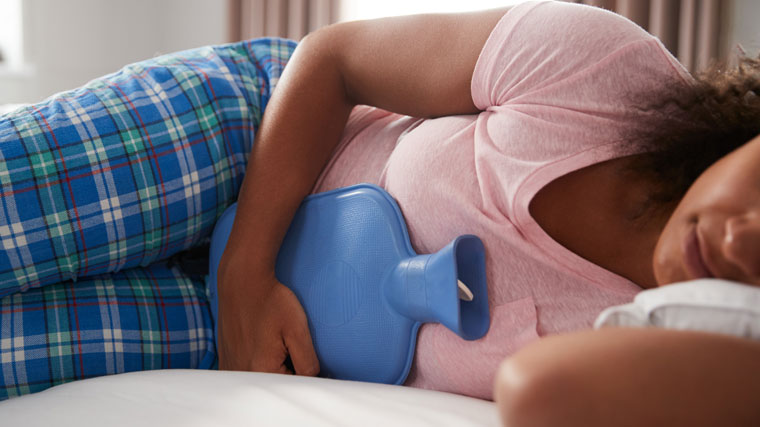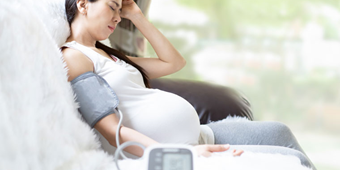Menstrual Pain Can Be Common Or Sign Of a Bigger Problem

If every month you suffer from pain and cramping because of your period, you’re not alone.
Many women suffer from painful periods, called dysmenorrhea.
The pain feels like a cramping and throbbing near your stomach and may include lower back pain, nausea, diarrhea, and headaches.
For some, the pain from menstrual cramps can make it difficult to do your regular day-to-day activities, including school work, your job, and household tasks. In fact, pain from periods is a leading cause of missed time at work for women in their teens and 20s.
There are two types of dysmenorrhea – primary and secondary.
Primary dysmenorrhea is the most common type of period pain, and it is not caused by any kind of underlying condition.
Chemicals called prostaglandins are found in the uterus. If you have has too many prostaglandins, it can cause the uterus to tighten and cramp.
The pain usually only lasts a day or two and lessens over time as you get older. However, some women have pain that lasts for more than two days and doesn’t ease with age.
To manage painful periods like these:
- Fill a hot water bottle to put on your lower abdomen
- Find time to exercise
- Take a hot bath
- Take over-the-counter medication, such as ibuprofen or naproxen
- Use a heating pad on your lower abdomen
- Use relaxation techniques, such as meditation and yoga
Secondary dysmenorrhea is menstrual pain that starts later in life and is caused by conditions affecting the uterus and other organs.
Conditions that can cause secondary dysmenorrhea:
- Endometriosis – When the endometrium, which is tissue that lines the uterus, grows outside the uterus where it doesn’t belong.
- Pelvic inflammatory disease – Known as PID, this is an infection of a woman’s reproductive organs, including the uterus, fallopian tubes, ovaries, and cervix
- Uterine fibroids – These muscular tumors grow in the wall of the uterus and can be as small as an apple seed or as big as a grapefruit.
With conditions like these, the pain during your period gets worse over time, often starts before a monthly period begins and continues after a period is over.
Caring for period pain from secondary dysmenorrhea is different for each condition that causes the pain.
- Endometriosis. While there is no cure for endometriosis, there are treatment options to help with pain from symptoms. If you are not trying to get pregnant, extended-cycle birth control that causes fewer periods each year and intrauterine devices (IUDs) that help to reduce and stop period bleeding both can be good options. If you are trying to get pregnant, your physician can recommend medication options that might work for you. As a last resort, surgery is available for severe symptoms.
- PID. Antibiotics are the treatment for this bacteria. It is important to finish all the antibiotics your doctor prescribes so the infection can be cured completely. In some cases, the problems caused by PID will make surgery necessary.
- Uterine fibroids. For many women, fibroids have no symptoms. In women who have minor symptoms from fibroids, medication – including over-the-counter pain relievers and iron supplements – might be the answer. Low-dose birth control also can help with heavy bleeding, which is another symptom of fibroids. Women with more severe symptoms might require surgery.
Sources: American College of Obstetricians and Gynecologists; National Institutes of Health




